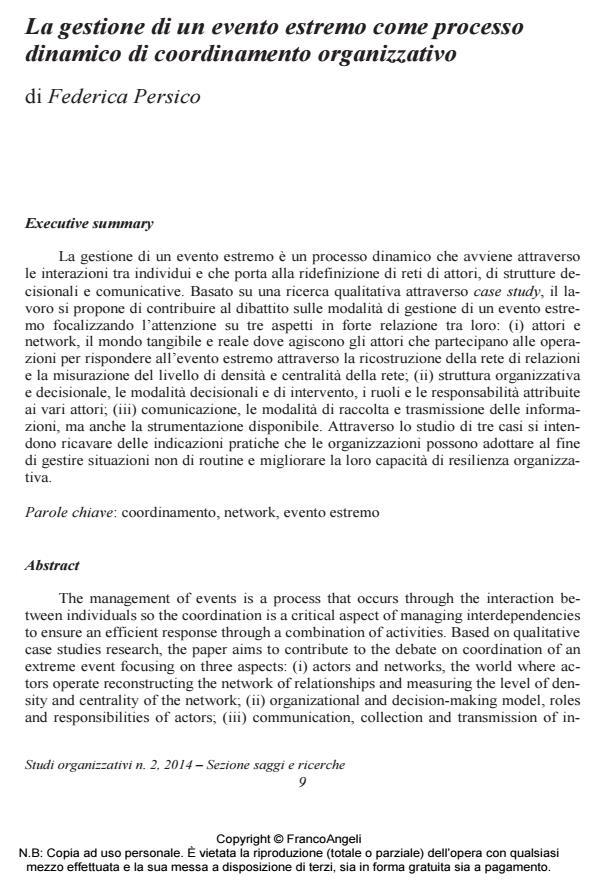La gestione di un evento estremo come processo dinamico di coordinamento organizzativo
Journal title STUDI ORGANIZZATIVI
Author/s Federica Persico
Publishing Year 2015 Issue 2014/2
Language Italian Pages 33 P. 9-41 File size 1141 KB
DOI 10.3280/SO2014-002001
DOI is like a bar code for intellectual property: to have more infomation
click here

FrancoAngeli is member of Publishers International Linking Association, Inc (PILA), a not-for-profit association which run the CrossRef service enabling links to and from online scholarly content.
The management of events is a process that occurs through the interaction between individuals so the coordination is a critical aspect of managing interdependencies to ensure an efficient response through a combination of activities. Based on qualitative case studies research, the paper aims to contribute to the debate on coordination of an extreme event focusing on three aspects: (i) actors and networks, the world where actors operate reconstructing the network of relationships and measuring the level of density and centrality of the network; (ii) organizational and decision-making model, roles and responsibilities of actors; (iii) communication, collection and transmission of information, but also technology tools. The analysis of case studies is a guide to organizations to manage non-routine situations and improve their organizational resilience.
Keywords: Coordination, network, extreme event.
Federica Persico, La gestione di un evento estremo come processo dinamico di coordinamento organizzativo in "STUDI ORGANIZZATIVI " 2/2014, pp 9-41, DOI: 10.3280/SO2014-002001